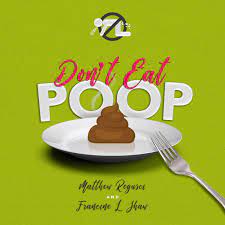In 2022, more than 80% of businesses encountered at least one major supply chain disruption, while half experienced three or more, and supply chain disruption is anticipated to continue. Supplier management systems are instrumental in minimizing the frequency of disruptions through proactive risk assessment, streamlined communication and robust contingency planning, allowing organizations to maintain operational resilience and continuity in the face of unforeseen challenges. One of the key components of a supplier management system is the supplier qualification program.
A supplier qualification program helps ensure that suppliers adhere to stringent standards and criteria, effectively controlling hazards and mitigating risks tied to subpar product quality, unreliable deliveries and lack of regulatory compliance. These programs foster consistency, reliability and excellence across the entire supply chain by meticulously evaluating and approving suppliers. In this article, we look at some prominent challenges in setting up supplier qualification systems, key facets of supplier management and the future of modern procurement.
Current Challenges in Supplier Qualification Models
In today’s rapidly progressing world, industries operate within a globalized framework, intertwining trade and technology to produce an unprecedented level of connectivity and interdependence that transcends geographical limitations through a harmonious exchange of goods, services and ideas across borders. This global network, however, poses challenges to food processors and distributors, as it requires them to identify and track large numbers of suppliers from greater distances. As a result, there is a new imperative for industries to be able to qualify suppliers that align with their supplier qualification goals on a global scale.
Following are some of the key considerations and challenges facing food companies:
Supply Chain Disruptions. Factors such as natural disasters, global pandemics and escalation of geopolitical tensions may lead to restricted access to vital materials or the closure of significant trade routes, resulting in supply chain disruptions that create limitations, making it difficult to evaluate the credibility of the suppliers.
Supplier Diversity. Supplier diversity refers to actively engaging suppliers owned and operated by individuals from underrepresented groups, such as women, minorities, veterans and individuals with disabilities, with the goal of promoting economic opportunities and cultivating inclusivity in the supply chain. It can present challenges for the supplier qualification process due to the limited pool of qualified diverse suppliers, competitive pricing, bias or skepticism, and equal support for all suppliers.
Regulatory Compliance. Organizations must navigate a complex terrain of regulations and standards that differ across industries and regions to achieve regulatory compliance within supplier qualification models. Compliance obligations encompass various areas, including labor practices, environmental regulations, data privacy and product safety. The continuous challenge lies in adapting qualification models that encompass evolving compliance standards and diligently observing supplier compliance on an ongoing basis.
Supplier Information. The multiple challenges related to supplier data management include the use of different technologies, procedural variations, employee training gaps in handling supplier information, monitoring difficulties, communication limitations and averting risks, such as intellectual property infringement and regulatory and legal compliance issues. Supply managers confront the dual challenge of meeting the growing demand for sharing sensitive data while protecting that data and ensuring a secure system for managing and updating supplier information.
Optimizing Supplier Performance. Once suppliers are qualified, supplier performance management is necessary to ensure compliance and maintain quality standards. There is often a lack of standardization in how suppliers are evaluated, making it tedious to define appropriate performance metrics, collect relevant data and consistently analyze supplier performance. This also makes it challenging to enable objective evaluation, facilitate ongoing supplier supervision and identify which suppliers are underperforming.
Communication & Collaboration. Effective communication is a reciprocal process that requires regular contact and engagement with suppliers at every project stage. Procurement professionals often overlook the importance of building strong supplier relationships and encouraging open lines of communication, which is essential for cultivating sustainable and successful supplier qualification models.
Data Management & Visibility. Controlling data use and distribution becomes challenging when information is dispersed across multiple supplier locations or sub-tiers of the supply base. Consequently, accessing and maintaining a single source of truth regarding supplier information, along with data accuracy, integrity and security is an important, though complex, need.
Scalability. For companies operating in varied markets and dealing with a large number of suppliers, the scalability of their suppliers is critical. A supplier who cannot scale production in response to the buyer’s production cycles and maintain corresponding quality control measures can become a challenge for the buyer.
The Key Elements of Supplier Pre-Qualification
Supplier pre-qualification is a formal process of pre-screening and assessing potential suppliers against a predetermined set of criteria to ensure they have the baseline qualifications to provide a service or product before being accepted as a customer’s supplier and initiating procurement procedures. Only suppliers who meet established criteria are invited to tender. The process also helps in evaluating financial stability, mitigating supply chain risks, keeping an eye on environmental credentials, ensuring sustainability practices and complying with diverse regulations and quality standards.
To adequately pre-qualify a supplier, buyers must consider the following:
Supplier Evaluation Criteria. Organizations must establish benchmarks or specific requirements that suppliers must meet to qualify for participation. These criteria can vary depending on the nature of the procurement, but they commonly include factors such as experience, technical capabilities, financial resources, legal compliance, quality management systems and past performance.
Supplier Documentation and Information. Suppliers must submit documentation and information that provide evidence of their qualifications. These may include company profiles, financial statements, licenses and certifications, regulatory documents, references, product samples and other relevant information demonstrating their ability to meet the organization’s needs.
Supplier Auditing. Submitted documentation and information should be reviewed through supplier auditing as part of pre-assessment or continuous evaluation procedures to assess the suitability of each supplier. This evaluation may involve a review of financial records, conducting site visits, interviewing key personnel and analyzing past performance records. The goal is to gather as much information as possible to determine the supplier’s capabilities, trustworthiness and overall suitability for the procurement.
Risk Assessment. As part of the pre-qualification process, organizations often conduct risk assessments to evaluate the potential risks of engaging each supplier. This assessment may consider factors such as financial risks, legal compliance risks, operational risks and reputational risks. The purpose is to identify and mitigate potential risks of working with a particular supplier.
Supplier Onboarding. Based on the evaluation, the organization shortlists suppliers that meet the predetermined criteria and have demonstrated the necessary capabilities. These suppliers are considered eligible to participate in the subsequent procurement process and are onboarded.
Emergency Supplier Approval. There must be a provision to address and handle emergency supplier qualification in situations where there is the absence of an established supplier approval process. This step should propose workaround measures or solutions that can be implemented to minimize or mitigate risks and manage critical supply requirements.
Supplier Performance Monitoring. The pre-qualification process may also involve monitoring the performance of existing suppliers to ensure they continue to meet the organization’s requirements and standards. This ongoing evaluation helps maintain a pool of qualified and reputable suppliers for future procurement needs.
How Tech-Enabled Solutions Optimize Supplier Management
As the age of modern procurement practices commences, tech-enabled supplier management solutions and digital software will play an increasingly pivotal part in supplier qualification systems. Supplier pre-qualification and performance assessment through digital processes and forms offer numerous advantages to businesses, including:
Efficiency and Time Savings. By automating manual tasks such as documentation collection, verification and approval, the entire supplier management process, from onboarding to continuous monitoring of suppliers, can be simplified and expedited. Digital features such as supplier performance tracking, compliance monitoring and alerts for contract renewals or expirations drive business continuity. It further streamlines organizing and analyzing supplier data, lowering administrative burdens related to paperwork collection, enabling faster decision-making and helping to nurture a culture of safety with significant cost benefits as well.
Enhanced Data Accuracy. Digitizing supplier qualification models can help organizations maintain more reliable supplier information and reduce the risk of incorrect or outdated data by minimizing human error and ensuring accurate and consistent data entry. Implementing stable data management systems and technologies, such as supplier management software, can also aid in identifying and managing supplier risks through early identification of issues and timely mitigation to minimize supply chain disruptions.
Centralized Data Repository. Digital supplier management tools offer a centralized repository to store all supplier-related information, such as qualification documents, certifications, performance metrics and contracts. This allows for easy access, retrieval and sharing of information across departments or teams, fostering collaboration and eliminating data silos. Data centralization can also provide comprehensive data analytics and reporting.
Streamlined Qualification Process. Standardized workflows and pre-defined criteria brought about by digital tools for supplier qualification enable a more structured and efficient process. They often include automated screening mechanisms, such as compliance checks and risk assessments, which help evaluate suppliers against specific requirements and filter out unqualified candidates.
Supplier Visibility through Trend Analysis. Tech-enabled solutions often encompass reporting and analytics capabilities that enable stakeholders to acquire valuable insights into supplier performance, cost structures and trends by tracking and reviewing key performance indicators (KPIs) based on predefined metrics. Organizations can leverage this data to identify opportunities for cost savings, process improvements and strategic sourcing decisions. This results in real-time visibility into supplier performance, capabilities and compliance status, based on precise and up-to-date information.
Supplier Collaboration and Engagement. Some tech-enabled solutions help secure supplier communication channels and provide real-time collaborative platforms, which promote transparency and accountability in supplier-procurer relationships. These may include features such as supplier portals or online platforms that enable document sharing, bid submissions and performance feedback, fostering better engagement and long-term relationships.
Future Advances in Supplier Management
Looking ahead, digital solutions for supplier management are poised to transform the supplier-procurement paradigm for businesses. By utilizing artificial intelligence (AI) algorithms, the supplier management process will become more efficient, reducing validation steps and communication requirements, and encouraging greater supplier participation. AI’s data-gathering capabilities and predictive modeling can accurately predict foodborne illness outbreaks that may occur by analyzing supplier data from various sources including environmental factors, ingredient quality and contamination history.
Similarly, Internet of Things (IoT) data allows companies to monitor and optimize the movement of goods and services throughout the supply chain, establishing better traceability in the procurement process. With blockchain, companies can effortlessly verify supply chain integrity and product authenticity without human intervention, which further refines supplier auditability, addressing the complexities and delays in information flow between intermediaries and suppliers.
The integration of these state-of-the-art technologies will propel increasingly accurate and dynamic supplier management software, bringing forth a safer food supply chain for the future.
![Example Risk Scoring Table]](https://foodsafetytech.com/wp-content/uploads/2024/04/Figure1.jpg)













